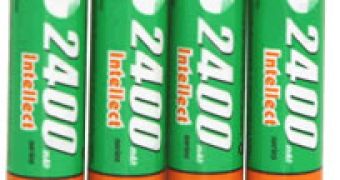Aside from being very unreliable when it comes to retaining an electric charge for long periods of time, typical batteries sometimes also have problems with excessive heating that can make them either explode and start fires, or leak toxic fluids when left unused for long periods of time. Additionally, most of the time batteries come in rather bulky forms and rigid constructions. However, in August last year a team of researchers from the Rensselaer Polytechnic Institute claimed to have constructed a battery that can work with natural electrolytes, such as blood or sweat.
The battery is in fact made of a material containing about 90 percent cellulose and 10 percent aligned carbon nanotubes, is as thin as a sheet of paper and also flexible like one. The aligned carbon nanotubes are allegedly used to give it conductive capabilities and the distinctive black color. The material is called nanocomposite paper and is said to have most of the characteristics of typical paper, only that it is able to convert the energy of electrolytic ionic body fluids directly into electric energy.
Such nanocomposite paper designs could one day be used to create batteries to power medical implants such as pacemakers or other advanced prosthetics, by implanting them under the skin without causing the patient any discomfort.
Since ionic fluids do not freeze or evaporate as water does, the battery could be used in temperatures ranging between -73 and 143 degrees Celsius, without suffering significant damage. Also, given the lightweight of the paper, the technology could be one day used in the automotive and aeronautics industry, to create highly fuel efficient vehicles.
The researching team reckons that the material can be used either to create high-energy batteries or high-power capacitors that can store large amounts of energy in relatively short amounts of time and release it just as quickly.
Since all that is required to construct the nanocomposite material are cellulose and carbon nanotubes and the electrolytes are naturally occurring, the batteries are also environmentally friendly. Nevertheless, it may take some time before they role out of mass production facilities, since problems with the efficiency and production methods haven't been sorted out yet.

 14 DAY TRIAL //
14 DAY TRIAL //